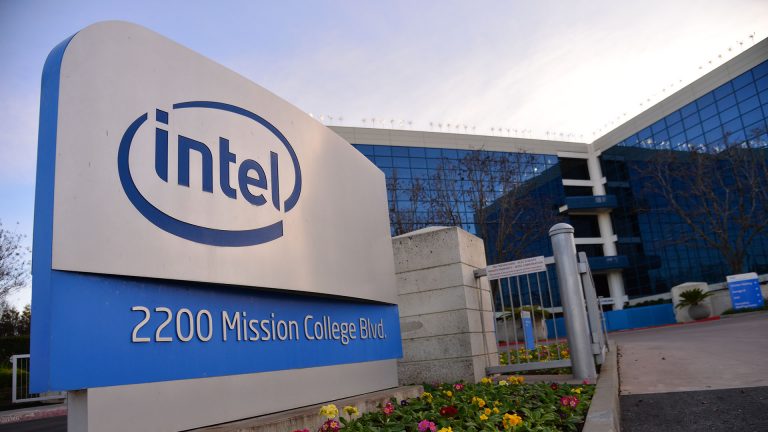
Intel Corp was legendary for decades as it pursued its strategy of designing microchips and manufacturing them in-house. For decades, that integration served well and Intel became the category-king, winning over competitors like AMD. But Intel faces a double whammy: losing the edge on design to Nvidia (and Qualcomm, AMD, etc) on GPU and mobile chipsets; and lagging on manufacturing capabilities to TSMC and Samsung.
But in a recent update, from the incoming new Intel boss, Intel noted that it would continue its old strategy: design chips and make them in-house even though in some cases, it could outsource the manufacturing. Nvidia makes the best chips for graphical processing units. Qualcomm is the industry leader in advanced mobile chipsets. AMD has also picked itself together and now makes extremely great chips.
Intel’s incoming CEO Pat Gelsinger said the company will largely continue to make its future products internally and work to regain its lead in chip manufacturing, even as it uses outside factories “for certain technologies and products.” Intel had for months been considering whether to keep its longheld strategy of both designing and making chips, or outsource to rivals. The company also released its fourth-quarter results a few minutes ahead of schedule on Thursday, saying a hacker stole financially sensitive information from its website.
This is tragic for the United States but not totally unexpected. By the time I graduated with my PhD in Electrical Engineering from Stanford in 2012, it was clear to me that the United States was losing its edge on this area. It’s one of the reasons I decided to reorient my career towards software engineering. There seems to be bipartisan agreement in DC that restoring American semiconductor manufacturing leadership is important for the future of the country. It’s the private sector that needs to understand this and come up with ways to make it happen. “Mr. Gelsinger on Thursday said Intel would have other chip companies make more of its products, even if the bulk of its new chips in the coming few years would be made in house. The shift marks a break from Intel’s traditional reliance on its own factories to make its most-advanced chips—effectively an acknowledgment that it has fallen behind chip-making rivals.”
The only promising sector where Intel remains dominant has been server chips. But unfortunately, that may not matter as most companies like Amazon, Google and Facebook do not need advanced server chips to run their data centers: they parallel common chips and still get the expected results. So, just like that, the differentiation Intel has in a high growing sector, in the cloud mobile era, looks muted.
Register for Tekedia Mini-MBA edition 18 (Sep 15 – Dec 6, 2025): registration continues.
Tekedia AI in Business Masterclass opens registrations.
Join Tekedia Capital Syndicate and co-invest in great global startups.
Register for Tekedia AI Lab: From Technical Design to Deployment.
So, what should Intel do? I think Intel needs to be broken into two companies. Yes, HP did it – and it is time for Intel to follow. Intel design unit has a hangover from the manufacturing business since it will not like to advance faster than the manufacturing capabilities. That makes it hard for the design unit to compete with the likes of Nvidia who do not manufacture their chips but rely on TSMC to make them.

TSMC has gotten better on the strength that it has volume since everyone is a customer, from Amazon to AMD to Facebook and indeed everyone not using Intel, Samsung and GlobalFoundries. Due to that financial warchest, TSMC has leapfrogged Intel on manufacturing. Samsung, relying on the “one oasis” and “double play”, remains dominant in the most advanced chip manufacturing domain, making it the preferred customer to Apple.
So, what has happened here is that Intel is not attracting the best customers because some of those customers are Intel direct competitors. Unlike TSMC which manufactures only, Intel competes on design with many firms. So, separating the companies will allow the design unit to fly and also allow the manufacturing business to bring in new clients. The current hangover between the two businesses is making it hard for Intel to thrive. That it worked in the past when TSMC did not exist does not mean that it can work now.
(Intel’s focus on speed – the Moore’s law – has distracted it. Today, great processors do not just deliver speed, they offer better power management for mobile systems besides making it easier to run AI processes. Nvidia has done a great job there and with ARM going to Nvidia, that edge is expected to continue.)
Intel has been disintermediated by TSMC with its legendary manufacturing moat dismantled by the global contract chip manufacturer. The implication is that the castle which Intel has protected for decades is largely vulnerable now. Nvidia does not build big foundries but focuses on R&D designs while its manufacturing partners make the chips. It is a leader in modern chips for datacenters, gaming, AI and more. If ARM goes to Nvidia, it will pick a huge part of the mobile sector, and if that happens, Intel will bleed for years

TSMC has broken the veil in chip business just like cloud companies have removed the moats of starting digital technology startups. The implication is that more design houses will emerge since manufacturing has been taken care of by TSMC. So, Intel design unit will see more competitors and certainly needs to stay more focused, unbundled from the manufacturing business. On the Intel manufacturing unit, with TSMC there, its future will remain challenged as not many companies will now do business with it since supporting it means making Intel design stronger. On that ground, breaking Intel into two – design and manufacturing – would have been the best outcome. It may not happen immediately but it will happen very soon.
It is an irony: the most important company for American tech is in Taiwan! And it is bringing down Intel, after IBM (the foundry) and will rewire everything.
On Wall Street, two stocks that have been left out of tech’s rally reported earnings that were more about promises than results. Intel said its fourth quarter sales got a boost from the COVID home PC boom, while more lucrative sales to cloud providers and corporate servers dropped. New CEO Pat Gelsinger says he’s getting excited about chips to come. Intel shares, up just 3% over the past year, are down 5% in pre-market trading on Friday. Similarly, IBM reported revenue fell 6% while CEO Arvind Krishna offered visions of a brighter tomorrow. IBM shares, down 5% over the past year, dropped another 8% in pre-market trading. (Fortune newsletter)
---
Connect via my
LinkedIn |
Facebook |
X |
TikTok |
Instagram |
YouTube




Thanks for this article. It got me thinking about how it all played out for Intel and how we might see it evolve for other companies which are playing the vertical monopoly game today.
Intel was virtually a vertical monopoly of design and manufacturing of PC CPUs for decades because they won the primary source contract for the CPU in the IBM PC. IBM forced Intel to license the 80286 to AMD, because they didn’t want to allow Intel to become the sole source, but at that time AMD couldn’t hold a candle to Intel. As we all know, the PC eventually disrupted the entire computing hierarchy taking Intel with it (and AMD as an also ran). But, now this is coming to an end because phone and tablets are running on RISC and the key bottleneck to cloud services is not about CPU power, but networking. Those are both technical domains which Intel did not capture.
I’m not so certain that breaking up Intel will create successful parts. It’s possible that Intel’s manufacturing could be practically inextricably linked to their CPU designs.
What I find fascinating about your article, however is not so much about Intel, but what it portends for companies like Tesla, which a nascent vertical monopoly today, disrupting the auto industry.
Great point Michael on the possibility that Intel’s manufacturing unit may not even be open to serve non-Intel architected systems. But on Tesla, I think manufacturing is not necessarily a moat since building these systems may not require so much money when compared with building foundries. Tesla does not make it chips in-house, it is possibly using TSMC to do that. So, the integration in Tesla cannot be compared to what Intel did with its x86 system. More so, Tesla has done something which no other car company has even done: it reinvented how to make money on cars. Tesla separated its software licensing from the car which means to get updates, you have to keep shipping money to it. That is innovation as it makes Tesla a software company which also sells cars. That innovation has also played on how it sells emission credits: Fiat paid it more than a billion euros in 2019 to offset its credits. So, Tesla seems to be running a model that is not wholly integrated on manufacturing and design. https://www.tekedia.com/tesla-is-the-worlds-best-software-services-company-in-automobile-sector/